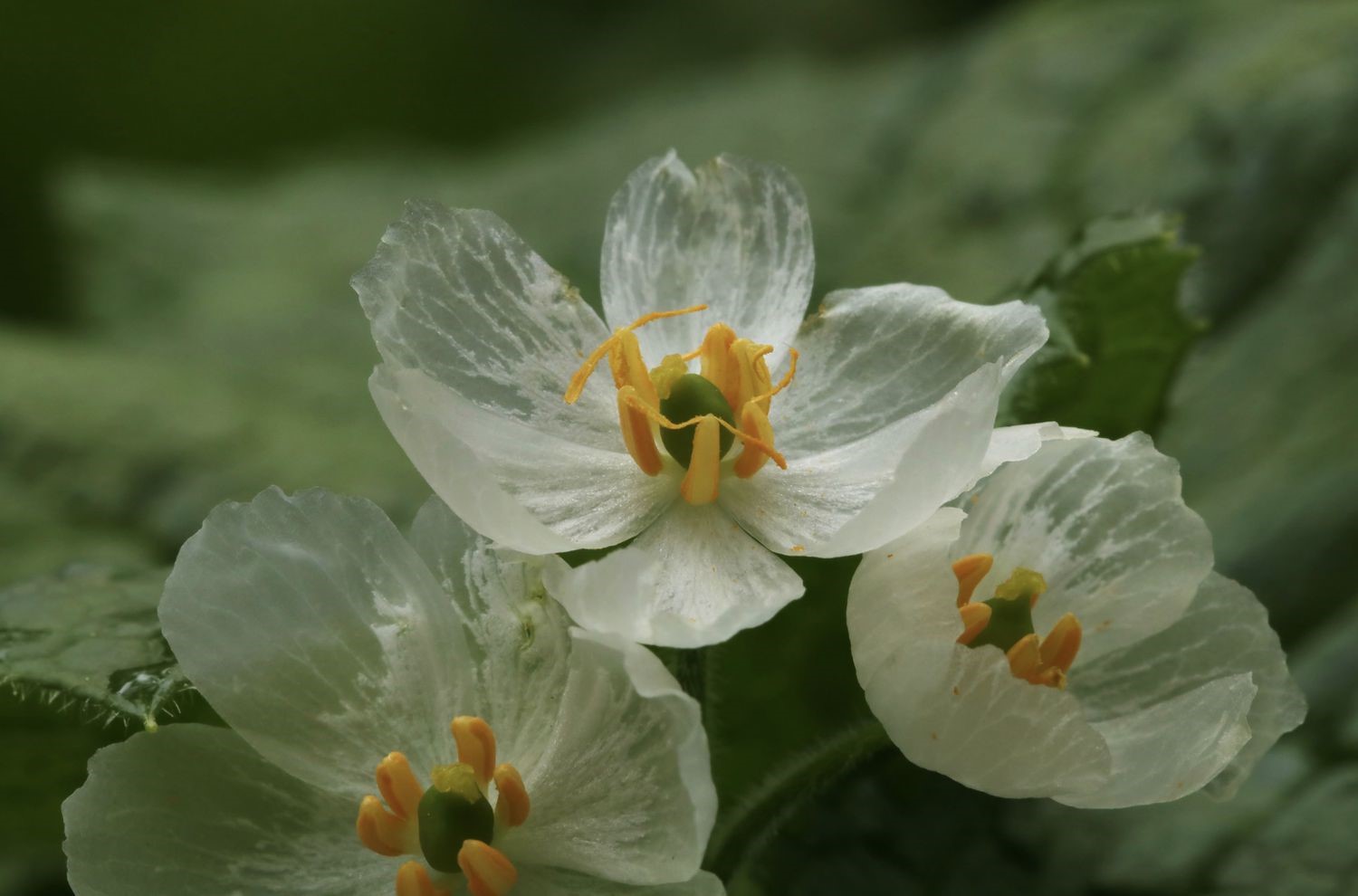
The Skeleton Flower, scientifically known as Diphylleia grayi, is a unique and fascinating plant that never fails to capture the attention of anyone who comes across it. Known for its ethereal and translucent petals that turn transparent when they come into contact with water, the Skeleton Flower is a true natural wonder.
In this article, we will explore 17 mind-blowing facts about the Skeleton Flower that will leave you in awe of its beauty and extraordinary features. From its native habitat to its mesmerizing transformation, we will delve into the world of this mysterious plant and uncover the secrets behind its enchanting allure.
So, if you’re ready to be amazed by the wonders of nature, join us on this journey as we unravel the intriguing facts about the incredible Skeleton Flower.
Key Takeaways:
- The Skeleton Flower, with its transparent petals and magical transformation when in contact with water, is a rare and endangered plant native to Asia, symbolizing resilience and adaptation.
- Despite its delicate nature and cultivation challenges, the Skeleton Flower adds mystery and intrigue to gardens, captivating botanists and photographers worldwide.
Transparent Petals
The most striking feature of the Skeleton Flower is its transparent petals. This remarkable characteristic gives the flower an otherworldly appearance, as if it were made of delicate glass.
Magical Transformation
When the petals of the Skeleton Flower come into contact with water, they undergo a magical transformation. They turn crystal clear, making them appear almost ghost-like.
Ethereal Beauty
The transparency of the petals allows the intricate veins and structures of the flower to be visible. This ethereal beauty adds to the flower’s mystique and charm.
Native to Asia
The Skeleton Flower is native to the cooler regions of Asia, particularly Japan, China, and the Korean Peninsula. It thrives in the damp and shaded environments of these regions.
Shade-loving Plant
This delicate flower prefers shady areas and thrives in the understory of forests. It is often found growing alongside mosses and ferns.
Small and Delicate
The Skeleton Flower is relatively small in size, with its petals measuring around 5-7 centimeters in diameter. Its delicate structure adds to its allure.
Seasonal Bloom
The Skeleton Flower blooms during the late spring and early summer months. Its beautiful, ghostly appearance adds a touch of enchantment to these seasons.
Fleeting Beauty
Unfortunately, the beauty of the Skeleton Flower is transient. Its petals gradually regain their white color as they dry, losing their transparent quality.
Medicinal Uses
In traditional Asian medicine, the Skeleton Flower has been used for its medicinal properties. It is believed to possess anti-inflammatory and pain-relieving properties.
Symbol of Transformation
The Skeleton Flower has become a symbol of transformation and resilience. Its ability to change its appearance in response to its environment is seen as a metaphor for adaptation.
Rare and Endangered
Due to habitat loss and overcollection, the Skeleton Flower is considered rare and endangered in its native habitats. Conservation efforts are underway to preserve this unique species.
Cultivation Challenges
Growing Skeleton Flowers in gardens can be challenging, as they require specific environmental conditions to thrive. They are best suited for moist, well-drained soil in shaded areas.
Fascination for Botanists
The Skeleton Flower has captivated the attention of botanists and plant enthusiasts worldwide. Its remarkable transparent petals continue to pique curiosity and inspire research.
Photographic Subject
The Skeleton Flower’s unique appearance and translucent petals make it a favorite subject for photographers. Capturing the delicate beauty of this flower is a prized achievement.
Alluring Garden Addition
Despite its cultivation challenges, growing a Skeleton Flower in a garden can be a rewarding experience. It adds a touch of mystery and intrigue to any floral display.
Myth and Legend
Throughout history, the Skeleton Flower has been associated with various myths and legends. It has been linked to tales of transformation, magic, and even eternal life.
Intriguing Nomenclature
The name “Skeleton Flower” perfectly captures the unique visual appeal of this remarkable plant. It evokes images of skeletal structures and adds to its enigmatic allure.
The Skeleton Flower continues to amaze and fascinate people with its transparent petals and captivating beauty. Its delicate nature, mysterious origins, and symbolic significance make it a true marvel of the natural world. Experience the enchantment of the Skeleton Flower for yourself, and let its ethereal presence leave you in awe.
So, the next time you encounter the Skeleton Flower, remember these 17 mind-blowing facts and appreciate the hidden wonders of nature.
Conclusion
The Skeleton Flower, also known as Diphylleia grayi, is a fascinating and unique plant that has captured the attention of many nature enthusiasts. From its translucent flowers that turn transparent when exposed to water, to its remarkable adaptability to different climates, this plant never fails to surprise and mesmerize. The 17 mind-blowing facts about the Skeleton Flower highlighted in this article only scratch the surface of its incredible characteristics.
Whether you’re a plant enthusiast or simply curious about the wonders of nature, the Skeleton Flower is definitely a plant species worth exploring. Its ethereal beauty and intriguing features make it a standout amongst other flowers. So, next time you come across a Skeleton Flower, take a moment to appreciate its delicate petals and the secrets it holds.
FAQs
1. What is a Skeleton Flower?
The Skeleton Flower, scientifically known as Diphylleia grayi, is an enchanting plant known for its unique feature of having translucent petals that turn transparent when in contact with water.
2. Where are Skeleton Flowers found?
Skeleton Flowers are native to the moist woodlands of China, Japan, and the Appalachian Mountains in the United States.
3. How do Skeleton Flowers change color?
When Skeleton Flowers come into contact with water, their white or pale pink petals become transparent, revealing the intricate network of veins that resemble a skeleton, hence the name.
4. Can Skeleton Flowers survive in different climates?
Yes, Skeleton Flowers are known for their adaptability and can thrive in both cool and warm climates. However, they prefer shade and moist soil conditions.
5. Are Skeleton Flowers toxic?
No, Skeleton Flowers are not toxic to humans or animals. However, it is always best to avoid ingesting any parts of the plant.
6. How long do Skeleton Flowers bloom?
Skeleton Flowers usually bloom in late spring or early summer and their flowers can last for several weeks.
7. Can Skeleton Flowers be grown in gardens?
Yes, Skeleton Flowers can be cultivated in gardens. They require moist soil, shade, and regular watering to thrive.
8. Can cut Skeleton Flowers retain their translucent appearance?
Unfortunately, when cut, the petals of Skeleton Flowers lose their translucent quality and become opaque.
The Skeleton Flower's ethereal beauty and fascinating qualities have captivated nature enthusiasts worldwide. Exploring the world of flowering plants reveals a treasure trove of incredible facts and stories waiting to be discovered. Botany holds countless enigmatic secrets, from the rarest blooms to the most astonishing adaptations. Uncover the mysteries of the plant kingdom and embark on a journey filled with wonder and surprises. Dive into the captivating realm of flora and let your curiosity be your guide as you explore the fascinating world of plants.
Was this page helpful?
Our commitment to delivering trustworthy and engaging content is at the heart of what we do. Each fact on our site is contributed by real users like you, bringing a wealth of diverse insights and information. To ensure the highest standards of accuracy and reliability, our dedicated editors meticulously review each submission. This process guarantees that the facts we share are not only fascinating but also credible. Trust in our commitment to quality and authenticity as you explore and learn with us.


